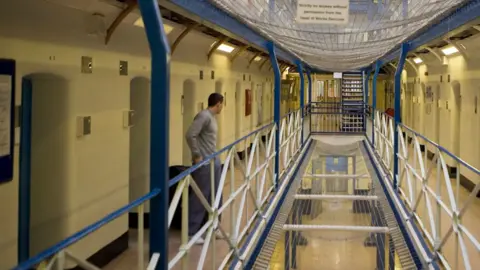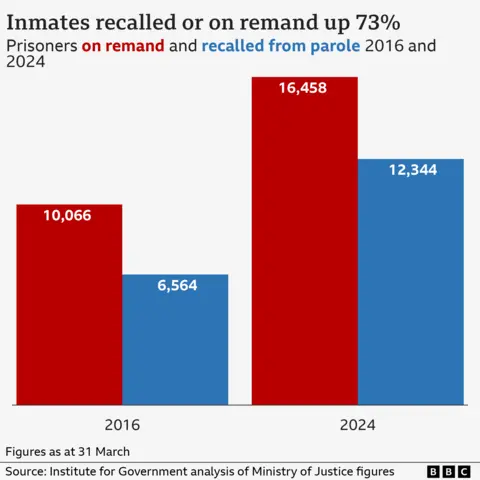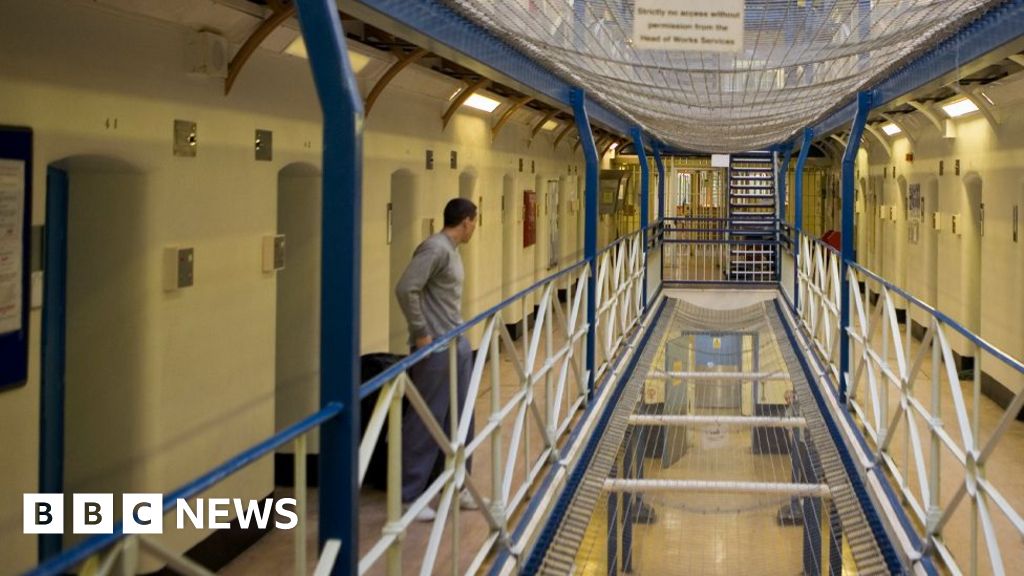Table of Contents
 Getty Images
Getty ImagesThe government’s early-release scheme for some prisoners in England and Wales began on 10 September.
About 1,700 prisoners were freed on the first day – and the Ministry of Justice expects the scheme to create about 5,500 extra prison places in the coming months.
The emergency measure is aimed at dealing with prison overcrowding.
Which prisoners are being released?
Eligible prisoners are being automatically released after serving only 40% of their fixed term sentence, rather than the usual 50%.
Sex offenders and those serving sentences of four years or longer for serious violent offences are not included.
The scheme also excludes those convicted of domestic abuse and what the government calls “connected crimes”, such as stalking and controlling or coercive behaviours.
It only applies to a certain type of sentence, under which prisoners are automatically released after a set amount of time.
More serious offenders serving life sentences, for example, are only released after the Parole Board has assessed whether they still pose a risk.
Anyone released will be monitored by the Probation Service, and this could involve the use of electronic tagging and curfews.
But BBC News has been told some former prisoners have not yet been fitted with electronic tracking devices, despite this being a condition of their release.
The Ministry of Justice blamed its security contractor, Serco, which manages the prison tagging system, for the delays.
Serco said it was working to reduce the numbers waiting for tags.
The next release date for prisoners under the scheme is 22 October.
How many people are in prison?
Ministry of Justice data showed the total England and Wales prison population on 6 September – before the early-release scheme started – was at a record high of 88,521.
And the “usable operational capacity” – the total number of people a prison can hold while taking into account issues like control and security – was 89,619, leaving spare capacity of just 1,098 places.
This is well above the prison service’s own measure of a “good, decent standard of accommodation”, which was 79,856 at the end of July.
On 13 September, a few days after the early-release scheme started, the prison population had fallen to 86,333 and the number of spare places risen to 3,219.
At current rates, the prison population had been projected to rise by about 17,000 by 2028, while capacity is set to rise by 9,000.

Why have prisons become so full?
The Institute for Government think tank says part of the answer is longer sentences.
In 2023, the average prison sentence given in the Crown Courts in England and Wales, which deal with more serious offences, was more than 25% longer than in 2012.
For some crimes, the increase has been even greater. Sentences for robbery, for example, were 13 months longer on average in 2023 than in 2012, a rise of 36%.
Longer sentences mean more people in prison at any given time.
The jailing of people involved in the summer’s rioting has also put additional pressure on prison capacity.
According to BBC News analysis, as at 17 September, at least 305 people had been sentenced for offences relating to those riots, with most sent to jail.
Another part of the answer is the increase in prisoners on remand, who are waiting for their trial to start, or to be sentenced.
In March 2024, the remand prison population stood at 16,458, a record high. In 2016, it was about 10,000.
Some of this increase has been driven by a record number of Crown Court cases waiting to be heard.
More people than before are also being returned to prison for breaching their release conditions.
In March 2024, the number was around 12,000 – another record high – and roughly double the number in 2016.

Why not build more prisons?
How will Labour tackle the prisons problem?
In July, the new Justice Secretary Shabana Mahmood told Parliament she will publish a new “10-year capacity strategy” later in 2024, to “acquire new land” for prison sites.
She also suggested prison building would be “placed in a minister’s hands” – a hint that decisions on building new prisons could be taken away from local planning authorities.
Yet there are also signs Labour might take a different approach.
Before he was appointed as the new prisons minister, James Timpson told Channel 4 news that he wanted to break the cycle of re-offending by giving ex-offenders more job opportunities.
That is something he has done through his family firm Timpson. The key cutting and shoe-repair company says around a tenth of its employees are former prisoners.
Mr Timpson also spoke about reducing sentencing and sending considerably fewer people to prison.
“So many of the people in prison in my view shouldn’t be there. A lot should but a lot shouldn’t, and they’re there for far too long” he said.
Conservative MP Neil O’Brien is among critics of the plan, arguing that “prison works”.



